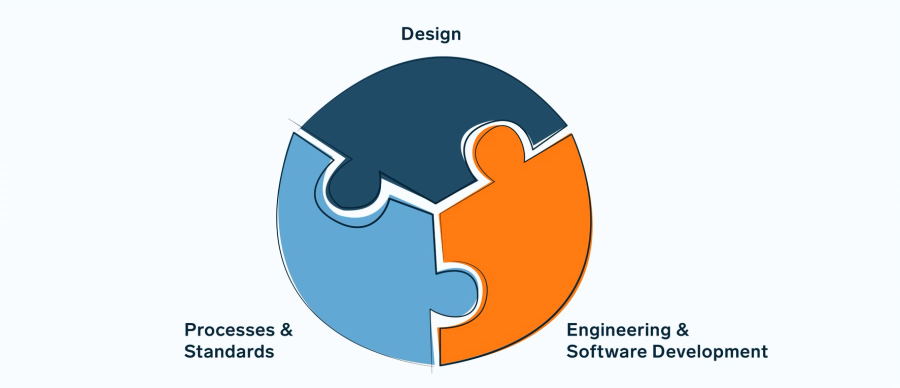As software development has become an increasingly important part of our lives, businesses have been looking for ways to optimize their system design to speed up the development process and improve the end product. The challenge is that building systems or networks from scratch can be extremely complex and time-consuming, so developers and business owners must understand what goes into creating a good system architecture before embarking on such a project. In this article, we’ll take you through some tips and tricks on creating a successful system design that will make your software development projects more efficient while reducing costs. In addition, we’ll cover best practices when constructing architectures, exploring ways to use existing components within an infrastructure, and discuss methods of tackling common issues encountered during these endeavors.
What is system design & why does it matter in software development?
System design is the process of designing, creating, and implementing a system to meet certain requirements. It typically involves taking a broad view of a software development project to ensure that all components, from the user interface to the back-end database, work together smoothly. As a result, system design helps developers create efficient and reliable software solutions that provide users with an optimal experience.
It’s important for software developers to consider system design when designing programs or websites, as it can significantly impact how successful the product will be. By carefully planning out each system component beforehand and accounting for potential problems, developers can ensure smooth operation and reduce time spent troubleshooting issues later on. Additionally, considering system design during the initial stages may prevent costly mistakes and save time and resources.
Overall, system design is an integral part of software development that should not be overlooked. It helps to create efficient and reliable solutions, reduce costs and ensure a positive user experience. In addition, developers can optimize their product for success by thoroughly examining each system component in advance.

In today’s digital economy, companies must have strong system designs in place to remain competitive. System design provides the necessary structure needed for businesses to understand their products’ operations better and scale them up as required. This can lead to more efficient processes, improved customer experiences, and ultimately result in higher profits. Furthermore, by understanding how different system components interact, companies can make informed decisions and develop more effective products.
System design is also important for helping developers create more secure software solutions. By considering potential security issues in advance, they can come up with stronger protection measures that help prevent unauthorized access or data breaches. This allows businesses to protect their customers’ information better while improving trust in the company’s product.
Overall, system design is essential for successful software development projects and should be noticed. It helps to ensure efficient operations, improved user experiences, greater security, and ultimately higher profits for businesses in today’s digital economy. Therefore, it is important to consider how different system components interact during the early stages of any project so that developers can create the best possible product.
Mastering system design: the ultimate guide for software developers
In software development, the design of a system is the foundation for any successful product. Therefore, it is essential to ensure that all aspects of the system architecture are well thought out and properly integrated. This guide will provide an overview of important system design concepts and practical advice on creating an efficient and effective design.
Systems Architecture: The first step in designing a system is understanding its architecture. This includes decomposing the problem into small pieces and selecting appropriate components for each piece. A good architecture should be designed with scalability, maintainability, extensibility, security, and performance in mind.
Data Modeling: After defining the overall architecture for a system, data modeling needs to be taken into consideration. This involves designing the database structure, defining relationships between entities, and understanding how data will be queried. When designing a data model, it is important to consider both query performance and scalability.

Service Design: Services are the components that make up a system. A service should have well-defined inputs and outputs for it to interact with other services within the system. In addition, each service should be designed for scalability, maintainability, extensibility, security, and performance.
API Design: APIs are integral to any system design as they provide a way for different components to communicate. A good API design should consider the needs of both developers and users while also considering scalability, maintainability, extensibility, security, and performance.
Caching Strategies: To improve system performance, caching strategies can be used. Caching involves storing data in memory to access it when needed quickly. Different types of caching strategies exist, such as page caching, object caching, and database query caching – each with its own pros and cons.
Deployment: Deploying a system is the final step in the design process. It involves taking all of the components that make up the system and getting them running on an environment where they are accessible to users. This process should consider scalability, maintainability, extensibility, security, and performance while also considering cost-efficiency.
In conclusion, system design is crucial to any software development project. It requires an understanding of architecture, data modeling, service design, API design, caching strategies, and deployment. Following this guide should help you create an efficient and effective system design for your product.
